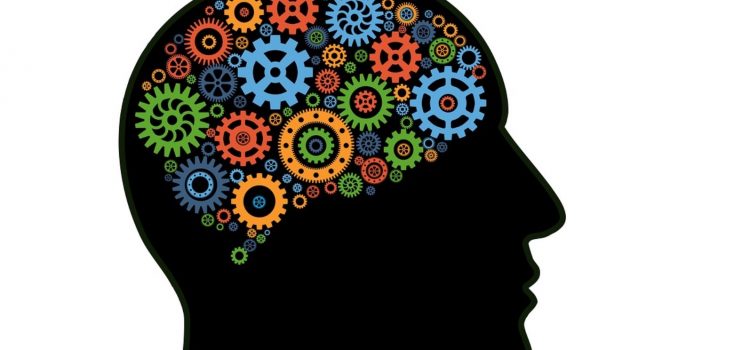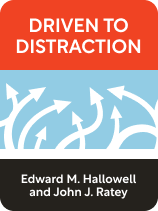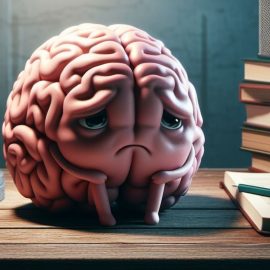

This article is an excerpt from the Shortform book guide to "Driven to Distraction" by Edward M. Hallowell and John J. Ratey. Shortform has the world's best summaries and analyses of books you should be reading.
Like this article? Sign up for a free trial here.
What are the pros and cons of ADHD? What positive effects can ADHD have on someone?
Driven to Distraction by Edward M. Hallowell and John J. Ratey lists the symptoms of ADHD. Further, the authors state that while there are negative effects of ADHD, there are strengths to it as well.
Let’s look at the pros and cons of ADHD below.
Strengths and Weaknesses of ADHD
There are many pros and cons of ADHD. The negative effects of ADHD include:
Hyperactivity. This is one of the most visible symptoms of ADHD and was considered the main symptom until the 1970s. People with ADHD often fidget or feel the need to get up and pace in situations where they’re expected to remain still or seated. This is because people with ADHD crave a greater amount of stimulation than people without ADHD, which causes them to get bored more easily and have a low tolerance for boredom.
(Shortform note: The hyperactive behaviors like fidgeting and pacing, which the authors mention, are types of self-stimulatory behaviors, or stims for short. Other stims include repeating words or phrases, doodling, foot-tapping, nail-biting, rocking back and forth, or anything anyone does to stimulate themselves. Stimming is a self-soothing technique that can be very helpful in managing emotions and staying focused.)
Attention inconsistency. This is the struggle to focus on one thing at a time or to filter out distractions and prioritize what they need to focus on. The authors describe this as attention “inconsistency” rather than “deficit” because people with ADHD can focus on things—it’s just that they struggle to narrow their focus to the right things.
(Shortform note: additional research into attention clarifies what attention inconsistency looks like in the brain. Experts say there are two separate functions involved in paying attention: enhancement—focusing on what’s important—and suppression—tuning out what’s not important. If you have ADHD, you likely struggle to suppress unimportant information or stimuli, which then looks like distractibility and either an inability or an unwillingness to enhance important information.)
Disorganization. People with ADHD tend to struggle with disorganization and have trouble organizing their thoughts and lives. They may speak or write in a way that is meandering or long-winded, and they tend to have difficulty stringing ideas together logically. This can create a tendency to spill out all information at once and hope it makes sense.
(Shortform note: While it’s true that people with ADHD may struggle to express themselves logically, most listeners can fill in those logical gaps themselves. What’s more, this type of nontraditional speech may even spawn more original and out-of-the-box ideas.)
Externally, people with ADHD often have a lot of messes. They can find it difficult to sort items and often use “piles” as their organizational system.
(Shortform note: The “piles” issue the authors address is reflected in the recent concept of “doom boxes.” These are boxes into which people with ADHD often put unsorted things they don’t know what to do with. By the time they get around to sorting out the box, it’s often become so large that it’s overwhelming to try to sort through.)
Memory disruptions that interfere with task completion. A person with ADHD might have a major task to complete but will continually forget to do it despite wanting and intending to. This difficulty can occur even on a second-to-second basis: They may notice something minor that needs to be done, like throwing away a piece of trash, but in the few seconds it takes to switch to that task, they may forget it entirely.
(Shortform note: People with ADHD often have trouble with long-term memory in addition to short-term memory. Scientists believe that this may have to do with the way people with ADHD process information: It’s less a matter of memory loss and more about struggling to create the memories in the first place because of attention issues, information processing issues, and distractions.)
Additionally, people with ADHD often have a poor sense of the passage of time, have frequent mood swings or extreme experiences of emotion, and have a lot of difficulty with follow-through, often having many different unfinished projects going at once.
Despite these negative-seeming symptoms, the authors emphasize that ADHD can come with strengths as well, the foremost being creativity: The way a person with ADHD thinks is more chaotic than that of a person without ADHD, allowing them to make connections between thoughts and ideas that others may not consider.
Impulsivity, another trademark symptom, leads to great spontaneity of ideas, and the ability to hyperfocus—or focus very intensely on a project for a long period of time—can enable a person with ADHD to power through a creative project much faster than someone without ADHD. The authors say many successful innovators and inventors have ADHD, as well as renowned historical figures like Amadeus Mozart, Benjamin Franklin, and Albert Einstein.
(Shortform note: It may be more productive to view ADHD as a gift rather than a disorder or disease. Some experts compare it to left-handedness: Being left-handed can be very difficult since so many products like school supplies are made with right-handed people in mind, but it can also give you a great advantage in certain activities, like sports. Similarly, people with ADHD have the advantage in situations that lack structure or that require creativity or spontaneity.)
Updated Terminology and Other Difficulties
Some of the symptoms and traits the authors describe have been updated with newer terminology:
Difficulty in perceiving the passage of time is known as time blindness. This can be distressing for people with ADHD, as they can struggle with timed tasks to the point of being overwhelmed by them, and they also frequently struggle with being late (or excessively early).
People with ADHD experience, process, and express emotions differently than people without ADHD, a trait known as emotional dysregulation. A person with ADHD might have extreme emotional reactions, such as intense anger or overexcitement due to a difference in the way their brains handle and react to information.
The tendency to start something and not follow through on it is known as akrasia. Akrasia is the result of our brains prioritizing short-term rewards (like the immediate pleasure of playing a video game) over long-term rewards (like the satisfaction of completing a big project).

———End of Preview———
Like what you just read? Read the rest of the world's best book summary and analysis of Edward M. Hallowell and John J. Ratey's "Driven to Distraction" at Shortform.
Here's what you'll find in our full Driven to Distraction summary:
- What ADD is, theories on the possible causes, and potential treatments
- How our knowledge of ADD has changed since the book’s republication in 2011
- Tips for how to minimize your negative symptoms and make the most of your strengths






